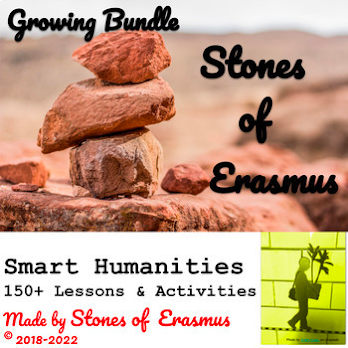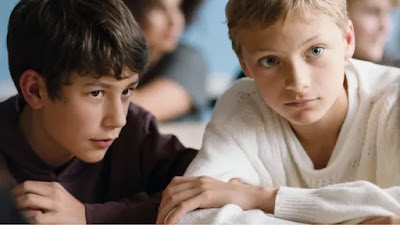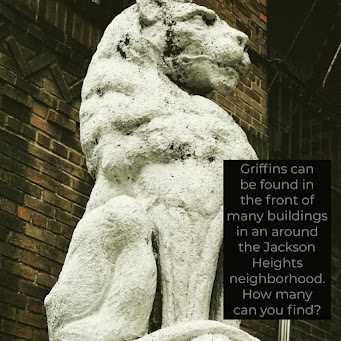In this post, I reveal how well-organized I am, and as a result, you now have a bird's eye view of every educational digital download available in my TpT store.
Hello, Teachers and Friends,
One thing I love about Teachers Pay Teachers is that it has forced me to become more organized. I am not naturally an organized person. In Kindergarten, my teachers bewailed my lunchroom messiness; in middle school, I barely kept my Trapper Keeper intact. However, flash forward to 2023 — and I have at least become more organized on TpT and in my own teaching practice.
Remember when you used to receive the Sears catalog as a kid, and you would circle in red marker the items you wanted and hoped mom or dad would notice? You are an adult with a bank account, so you don't have to beg Mom or Dad. But you can click the link and add to your wish list any of the items listed. Not going to brag, but you will be delighted. As recent buyers have said:
"Thank you for scaffolding the reading into manageable reading chunks and providing writing opportunities."
- Margie
"Love [your] products! Very thought-provoking. I used [it for] distance learning with students in zoom class."
- Aron
So, there you go.
Here is the complete catalog for the Stones of Erasmus store. Feast your eyes.
Stones of Erasmus Catalog
as of Summer 2023
Note: This catalog does not include bundles (except for a few exceptions). Listings with an asterisk * are free.
Map & Geography Skills resources- Geography Skills Lesson: Ready-to-Use Worksheet with Blank World Map
- Map Activity: Complete a Day in the Life of Socrates in Athens (411 B.C.E.).
- *Map Skills Lesson: Use Census Data about Ethnic Communities in NYC
- Map Skills Lesson: Using Census Data about the Changing Racial Makeup of the U.S.
- * New York, New York / It's a Wonderful Town: Navigating NYC In One Day
- Ancient Hebrew Poetry
- Ancient Egyptian Poetry
- Visualizing the Industrial Revolution Through Poetry
- Theme and Character Study Analysis
- Crafting Resolutions
- *Paradoxes, Contradictions, and Oxymorons
- Frayer Model Templates
- Four Digital and Print Exit Slips for English Language Arts
- Discuss the Marshmallow Test: Minilesson
- "What is Philosophy?" Task Card Set
- Freedom: Task Card Set
- Empiricism versus Rationalism
- Discuss any Moral Dilemma!
- Socrates on the Examined Life: The Apology of Plato
- Socrates at the Piraeus: Introductory lesson on Plato's Republic
- The Ring of Gyges (Glaucon's Argument from Republic)
- The Noble Lie in Plato's Republic
- Plato's Allegory of the Cave Base Lesson (from Republic) —
- Allegory of the Cave Quiz Bowl & Activity Pack
- Plato's Myth of Er (from Republic)
- Plato's Origin of Love (from Symposium)
- Plato's Origin of Virtue (from Protagoras)
- The Problem of Evil (Theodicy lesson)
- Nietzsche's Eternal Recurrence and the Movie Groundhog Day
- Nietzsche's Parable of the Madman (Philosophy of Religion)
- *10 Everyday Phrases from Greek Mythology
- What is Myth?: Introductory Lesson
- 101 Greco-Roman Mythology Reading Cards
- Hebrew Myths of Creation
- Greek Myths of Creation
- Myths of Creation from Ancient India (Hinduism)
- The Five Ages of Man (Ancient Greece)
- The Four Yugas of Man (Ancient India)
- The Hebrew Myth of Adam and Eve
- The Fates
- The Furies
- Uranus and Gaia
- Kronos and Rhea
- Atlas
- Other Titan Gods and Goddesses
- Pandora's Box (Or. Jar)
- Prometheus and Epimetheus
- Deucalion and Pyrrha (Ancient Greek Flood Myth)
- Noah's Ark (Hebrew Flood Myth)
- The Four Disgracers: Art and Mythology Mini-Unit
- Perseus
- Theseus and the Minotaur
- Icarus and Daedalus
- Tantalus
- Niobe and Her Children
- Bellerophon and Pegasus
- Orion the Hunter
- Sisyphus
- Phaëthon
- Ixion
- King Midas
- Endymion
- Apollo and Daphne
- Orpheus and Eurydice
- Pygmalion and Galatea
- Narcissus and Echo
- Pyramus and Thisbe (Babylonian Myth)
- Cupid and Psyche
- Europa and the Bull
- The Foundations of Ancient Troy
- Leda and the Swan
- The Judgment of Paris
- The Assembly at Aulis
- The Birth of Venus (Aphrodite)
- Zeus and Metis
- Athena Introductory Lesson
- The Goddess Athena Coloring Book
- The Owl of Minerva
- The Birth of the Goddess Athena (Parthenogenesis)
- Athena and Arachne
- Athena and Marsyas
- Athena as Mentor in The Odyssey
- Nature and Deeds of Zeus
- Nature and Deeds of Apollo
- The Birth of the Twins
- Nature and Deeds of Poseidon
- Dispute: Athena and Poseidon
- Artemis (Diana)
- Hestia (Vesta)
- Dionysus (Bacchus)
- Hades (Pluto)
- Ares (Mars)
- Hephaestus (Vulcan)
- Hermes (Mercury)
- Hera (Juno)
- Demeter and Persephone
- Labyrinth (1986): Classroom Film Guide
- Eternals (2021) and Myth Film Guide: Question Bank and Lesson Activity
- Eternals Olympic Myth Mini-Unit: with Icarus & Prometheus
- Five Myth Charts for the Comparative Study of Mythology
- Compare and Contrast Myths (Graphic Organizer and Tracker)
- Mythology-Themed Writing Paper, Mythology Clip Art
- Myth-Related Activities for Writers: 50+ Writing Prompts
- * Greek Mythology Unit Tests
- * World Literature Pre-Test Assessment
- Hinduism Summative Assessment (Unit Test)
- Academic Honesty & Integrity Student Guide
- Cornell Note-Taking Templates
- * Generic 3-Box Note-Taking Templates
- Imagining: Concrete Writing Skills Practice
- * Choose from Various Forms of Writing Anchor Chart
- Writing a Thesis Statement and Topic Sentences
- Organizing Main Ideas and Supporting Details
- * The Writing Process: Six Stages of Writing
- Analyzing as a Writing Skill: Skills Practice
- Discussion Protocol with Any Literary Work (for Writers)
- Role Playing Activity for Persuasive Writing
- Peer Evaluation Form for Speaking, Listening & Writing
- How to Write a Quatrain: Writing Skills Practice
- * Keeping a Writer’s Journal: Anchor Chart & Student Exercise
- How to Use Freewriting as a Brainstorming Strategy
- * Observing Details & Finding Telling Details Exercise
- The Pre-Writing, Drafting, and Revising Cycle
- The Revision Process
- Using Print & Non-Print Resources
- Integrating Quotations
- Using Questions to Organize Ideas
- Using Interviewing to Gather Ideas
- Methods of Organization (for Writing)
- Modes of Writing: Identifying the Four Modes
- * Purpose and Mode: Writing Anchor Chart
- Choosing a Purpose or Aim for Writing
- Choosing and Focusing on a Topic
- Sensory Details Anchor Chart for Writing
- Choosing & Analyzing an Audience
- Drafts
- Venn Diagrams
- Proofreading Checklist with Standard Proofreading Marks
- Keeping a Writer’s Portfolio: Student Work Tracker
- Finalizing Your Document: Anchor Chart & Writing Exercise
- Sharing and Presenting Student Writing: Idea Toolbox
- Using Computers & Devices in the Writing Classroom
- Diagnostic Essay Writing Assessment (for ESL&)
- * General English Language Exams: Long and *Short Versions (for ESL)
- "Araby" by James Joyce
- *"A Good Man is Hard is to Find" by Flannery O'Connor
- "The Garden Party" by Katherine Mansfield
- St. Lucy's Home for Girls Raised by Wolves by Karen Russell
- Literary Quote Posters
- Stamped: Racism, Antiracism & You by Ibram Kendi and Jason Reynolds: Stamped Discussion Guide and Reading Protocol
- Stamped 115+ Question Bank
Reading Campaigns for Teens
PDF Copy for Printing
- Culturally Responsive Summer Reading Campaign (2021)
- Doing and Being Well Summer Reading Campaign (2022)
- Teen Book List (2023)
- Peter and the Wolf © 2006 Oscar-Winning Short Film
- Writing a Movie Review
- First Day of School English Language Arts Student Survey
- First Day of School English Language Arts Parent Survey
- Student Photo Release Forms
- * 3-Box Note-Taking Template
- Art History Exam: from Pre-History to the Renaissance
- Facilitated Discussion on Empathy for Teachers and Staff
- Help Students Cope with Stress: Activity and Guide
- * Tutorial: Create Worksheets with "Forced Copy" (with Google Apps)
- Think About Any Quote! Graphic Organize
Thank you for following me on my journey. Leave a comment, drop a line, and visit me on my website at stonesoferasmus.com.
© 2017-2023

















